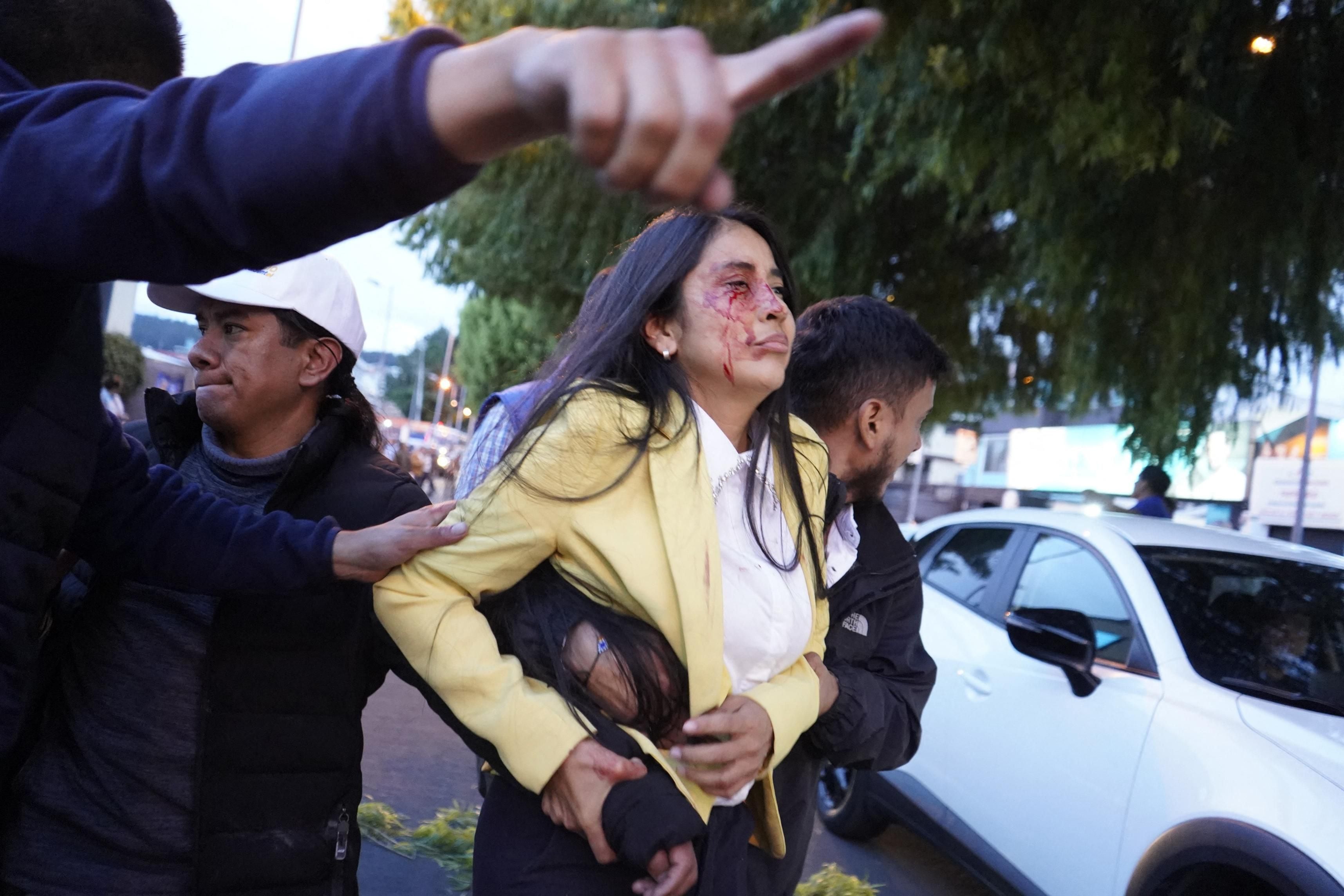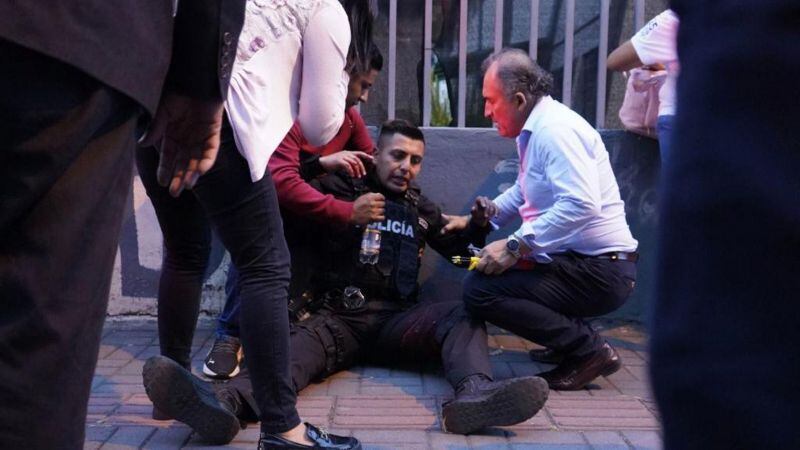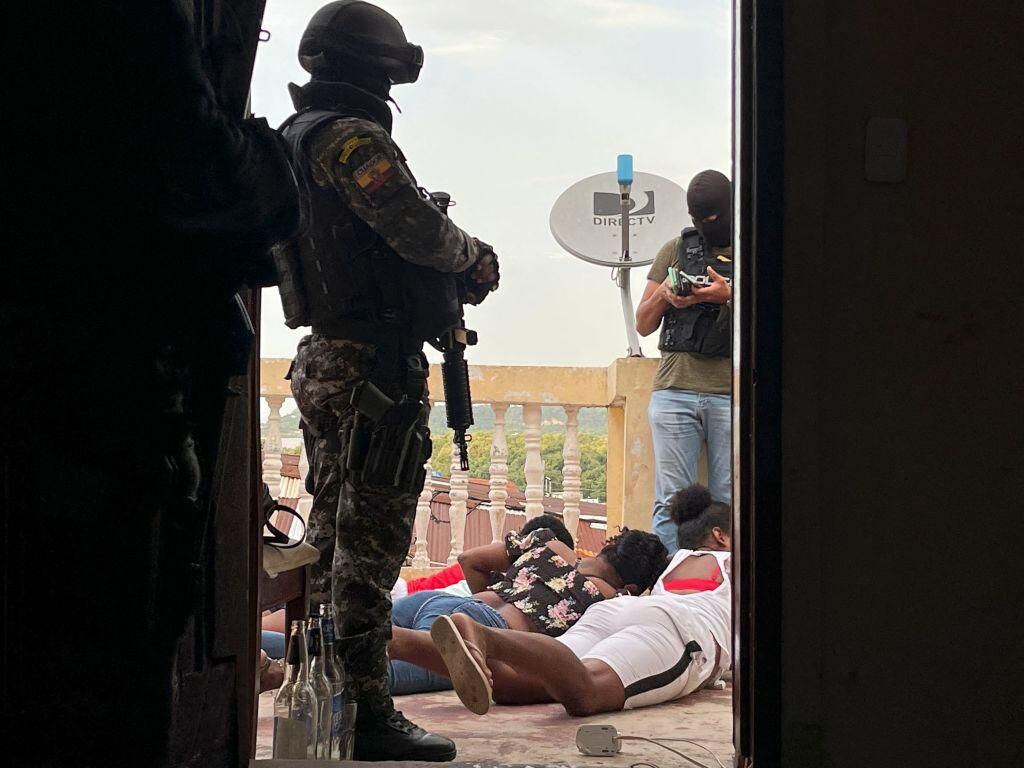Violence once again dyes the streets of Ecuador.
This Wednesday, the presidential candidate Fernando Villavicencio was assassinated in Quito after leaving a political rally.
LOOK: Ecuador: Presidential candidate Fernando Villavicencio is shot dead in Quito | VIDEO
Villavicencio, 59, died after being shot three times in the head in a hitman attack that also left around 40 people injured.
Ecuadorian President Guillermo Lasso immediately condemned the armed attack and declared a national emergency throughout the territory.
However, the murder of Villavicencio andIt is perhaps the most serious symptom of the context of violence who has lived in Ecuador for many months.
In addition to Villavicencio, in July of this year, Agustín Intriago, the mayor of the city of Manta, located in the west of the country, was murdered in an attack by hit men where an athlete also lost her life.
Added to this are the prison riots that have taken place in recent days.
The last of these, which occurred in July, left 31 prisoners dead in a prison in Guayaquil, the second largest city in the country.
The wave of violence occurs in the midst of the campaign for the presidential and legislative elections, scheduled for next August 20.
Below we present three keys to understanding what is happening in Ecuador.
1. Political violence
The seriousness of Fernando’s murder Villavicencio highlights the difficult situation of violence that Ecuador is experiencing.
Villavicenciowho worked as a union leader, journalist and deputy, had launched himself as a candidate for the presidency for the Construye movement after Lasso advanced the call for elections for August of this year.
He He had stood out for his denunciation of the leaking of drug trafficking in the official government bodies and he had based his campaign proposal on strengthening citizen security through the police and the army.
But despite being the most serious case, it is not the only one.
In July the country had already been shocked by the news of the assassination of the mayor of the city of Manta, Agustín Intriago, one of the most popular, who was shot dead while visiting a construction site.
In this event, which the authorities described as an attack, Ariana Estefanía Chancay, an athlete who had approached the official to ask for help, also died.
The assassination of the politician is added to others that have occurred in recent months.
Also in July, Rinder Sánchez, a candidate for deputy for the equally conflictive province of Esmeraldas, was shot when four subjects allegedly tried to steal his car and in February two aspiring mayors died in separate attacks.
Intriago’s death coincided with a new outbreak of violence in Ecuadorian prisons.
On July 22, inmates at the Guayas No. 1 Deprivation of Liberty Center, located in Guayaquil, the second most populous city and where Ecuador’s largest port is located, confronted each other.
The authorities sent 2,700 police and military personnel to restore order and put an end to the incidents that left 31 deadaccording to the data provided by the Prosecutor’s Office.


During these tasks, the uniformed officers seized an arsenal made up of long-range rifles, grenade launchers, ammunition and explosives, the Armed Forces reported from their Twitter account.
Hours later, inmates in 13 of the country’s 35 prisons began a hunger strike and they retained about 100 custodians.
President Lasso’s response has been to impose states of exception in different areas of the country.
Many analysts point out that it is difficult for this measure to put an end to the recurring episodes of violence that are experienced in prisons and which have left 400 dead since 2021according to organizations such as Human Rights Watch.
To top it off, in some cities and towns there were attacks and bombings against commercial establishments and private vehicles and public transport.

2. The claws of drug trafficking
The western provinces of Esmeraldas, Guayaquil and Manta have once again been the main scenes of the violence that has been experienced in recent months in Ecuador.
Because? There are the main ports of the countryan infrastructure highly coveted by criminals, particularly drug traffickers.
“Ecuador’s main problem in relation to the geopolitics of drug trafficking is given by its territorial location next to Colombia and Peru, the main cocaine producers in the world, as well as by the weakness of integrated border controls that facilitate the entry of drugs. which is later transported to strategic points of the coastal profile and Guayaquil”the Ecuadorian National Police admitted in a report published in July.
In that same report, the security agency acknowledged that the scant control by the State over the maritime and air territory facilitates the departure of aircraft and vessels from port terminals with almost no inspection.
The conditions described above have favored the formation of national criminal organizations and the arrival of other international ones, and the statistics seem to corroborate it. Since 2019, the amounts of drugs seized in the South American country have almost tripled, going to 201 tons compared to 79.5 four years earlier, according to the report.
Another sign is that homicide rates have skyrocketed. The number of homicides went from 1,088 in 2019 to 4,761 last year and the authorities maintain that 80% of these deaths are related to drug trafficking.
However, some figures recently provided by the police themselves cast doubt on this version. The organization assured that 79% of the 3,568 people murdered in the first half of 2023 they had no criminal record.

However, the Minister of the Interior, Juan Zapata, has insisted in recent months on the official thesis and has also offered another argument: the increase in the seriousness of the crimes.
“Now it is no longer the one-person selective death. Now the events are multiple, they don’t mind shooting in a restaurant”, the official said last January.
And in fact, several analysts have pointed out that the murder of Villavicencio would have criminal gangs financed by drug trafficking as its perpetrators.
Despite the seriousness of the panorama, Zapata has denied that the entire country is under the control of organized crime. “Violent deaths are geolocated. Ecuador has 24 provinces, the problem is in five, which are the drug route, ”he explained.
Some statements that the Ecuadorian journalist Carolina Mella, who lives in Guayaquil, questioned.
“Violence has begun to spread throughout the country. On the coast it is because drug trafficking needs the ports, but in the mountains it is because there are storage points, even in Quito”, he explained.

3. War on drugs and overcrowded prisons
The Ecuadorian government has blamed the current criminal boom not only on criminal organizations, particularly drug traffickers, but also on the little investment made by previous administrations in terms of security.
And, for this reason, Minister Zapata set himself the goal increase the number of police officers to 82,000 by 2024.
However, there are those who believe that this recipe is not the correct one.
“In Ecuador we are living a war against drugs (and we have a government) that aims to put more police and military on the streets, but does nothing to reduce money laundering,” complained analyst Luis Carlos Córdova in conversation with BBC Mundo.
“While playing cat and mouse, chasing gang members and diverting to safety enormous amounts of resources that should go to social investment, (the government) does nothing to break the economic structures of organized crime”, denounced the researcher of the Order, Conflict and Violence project of the Central University of Quito.
Córdova believes that the government should focus more resources on education, particularly to combat school dropouts and thus prevent youth finish the ranks of criminal organizations.
And he also advocated reinforcing controls over the police forces and the military to combat their possible links with criminals.
Regarding the prison crisis, when he signed the state of emergency decree after the riot in the Guayas prison, President Lasso was confident that the measure will allow “acting with greater force to subdue criminals” inside and outside the prisions. An optimism that his opponents do not share.
“This issue does not go through an exception decree. We are from decree to decree. We have lived through 16 decrees. What have they solved? Absolutely nothing”, said then the presidential candidate Luisa González, close to former president Rafael Correa.
With the declaration of national emergency taken after the death of the presidential candidate, There are already 17 decrees.
For its part, the Inter-American Commission on Human Rights (IACHR) has called on the Ecuadorian authorities to combat prison overcrowding, considering that it encourages violence and the emergence of illegal activities such as the extortion of prisoners by organized gangs.
Until 2022, there were 36,599 people in Ecuadorian prisons, despite the fact that they only had the capacity to house 30,169. And four centers were 95% overcrowded, denounced the IACHR in a report.
These violent acts have put security in the first place on the agenda, something that can benefit those who support the “bukelistas” theses.
Source: Elcomercio
I am Jack Morton and I work in 24 News Recorder. I mostly cover world news and I have also authored 24 news recorder. I find this work highly interesting and it allows me to keep up with current events happening around the world.

:quality(75)/cloudfront-us-east-1.images.arcpublishing.com/elcomercio/6SSCJHNUERGX5M4UDUAAM3MYXQ.jpg)

:quality(75)/cloudfront-us-east-1.images.arcpublishing.com/elcomercio/VMF4BPRSGVDJROELDMTHWPJOUQ.jpg)
:quality(75)/cloudfront-us-east-1.images.arcpublishing.com/elcomercio/OPEJHAKEBVCGRPCKESG7M4I3SE.jpg)
:quality(75)/cloudfront-us-east-1.images.arcpublishing.com/elcomercio/KAQOHTBK6VEYNIQNSXCWS25CRQ.jpg)
:quality(75)/cloudfront-us-east-1.images.arcpublishing.com/elcomercio/6PJZKOZDZ5FDDEGFA4VIDZCPDE.jpeg)
